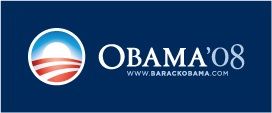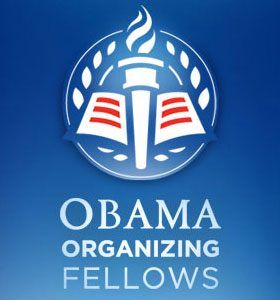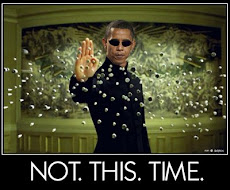The Black Panthers and Young Lords and the Civil Rights Movement
Steven Sapp and Mildred Ruiz, founders of the 15-year old poetry theater
ensemble Universes, whose works invite old and new generations of theater crafters to create the new stories of today. Join them as they lead a conversation with Miguel Mickey Melendez, former Young Lord and an activist for Latino and Puerto Rican rights, and Billy X. Jennings, Panther historian and primary organizer of the Its About Time BPP/Alumni Committee Reunions.
 The Black Panthers and Young Lords and the Civil Rights Movement from International Festival of Arts & on Vimeo.
The Black Panthers and Young Lords and the Civil Rights Movement from International Festival of Arts & on Vimeo.
The Young Lords in Chicago were always a gang and did not start out as a social club or youth group. They quickly sought out reputation walking into enemy territory and picking fights with all non-Latino gangs in Lincoln Park. Soon, they grew into several branches. This included a section in Old Town, another in Evanston and a few women auxiliaries called the Young Lordettes. When the Young Lords were transformed into a political, human rights group, male and female were both called Young Lords.
By 1967, the working class section of Lincoln Park became primarily Latino and the Young Lords - in their late teens without a gang war and without organized meetings - ceased to exist, except loosely, as a gang. Some married or were on active Vietnam duty. Many were incarcerated for car thefts, purse snatching, burglaries, armed robberies, drug sales, stabbings, shootings, and other gang-related crimes. Others fell victim to hard drugs. Still others moved to different neighborhoods and joined up with other gangs. Many became heads of other gangs, but never opposed the Young Lords.
During most of this period, Cha-Cha Jimenez and some remaining Young Lords spent their hours hanging out at the corner of Halsted and Dickens, at George's Hot Dog stand. Here Jimenez also hung out with loose members from the other gangs (some of whom he had spent time with in jails) and within a late 60s drug culture, they took to hard drugs, including: speed, acid, heroin, and cocaine. Cha-Cha Jimenez frequented jail, now more often due to drug related offenses. In the summer of 1968, he was picked up for a possession of heroin charge and given a 60-day sentence at Cook County Jail. An opposing black gang in jail told guards that Jimenez and five other Latinos were planning an escape. All were questioned, strip-searched and transferred to Maximum Security. It was here in "the hole" that Cha-Cha Jimenez read The Seven Story Mountain by Thomas Merton, about a Franciscan monk. It was his first book since dropping out in the second month of his freshman year at Waller High School (now Lincoln Park High). The dropping out of school was facilitated by Cha-Cha Jimenez's deportation to Puerto Rico, due to several juvenile related offenses - plea-bargained by an attorney that was hired with coins saved by Cha-Cha's mother - so that Cha-Cha would not be incarcerated, until the age of twenty one.
This religious book impacted Cha-Cha Jimenez, and he wrote a letter asking for a priest. Unconcerned with the everyday gossip of prisoners, he knelt down and went to confession between the cell bars of "the hole". Cha-Cha Jimenez then began to read about Martin Luther King Jr., Malcolm X and Black Nationalism and the organizing of the Black Panthers for self defense. Rioters were now being brought into the jail after King was assassinated, along with Mexican workers, rounded up in public relations raids by Immigration authorities. As they were being assigned dorms or cells, they passed through maximum security or the North Cell House, for further processing. To prevent the Mexican workers from being pushed around by some white and black guards, Cha-Cha Jimenez requested, and was given permission to translate for the Mexican workers, from his third level cell. These experiences made a secluded and captive Cha-Cha Jimenez realize, a need to fight for social justice. He was determined to duplicate a Black Panther Party for self defense, within the Puerto Rican and Latino communities. It was now also his intention to give up useless gang fighting and time consuming drugs upon his release, in order to devote all of his time to this new People's Movement. During this same period, the Puerto Rican section of Lincoln Park was being stripped of all city services to the poor. The Trina Davila Urban Progress Center was being relocated from the Armitage Avenue Methodist Church (later Young Lord's People's Church and their national headquarters) in Lincoln Park, to the Humboldt Park neighborhood. This was an area in need of services, and now also increasing in Puerto Ricans being displaced from Lincoln Park, as the result of the city's urban renewal program. Young Lords Party
By Carlito Rovira
JULY 28, 2009
Forty years ago, news headlines focused on a group of Puerto Rican youth in New York City who used daring and unusual forms of protest against racist oppression. These defiant and militant youths called themselves the Young Lords. Their examples, and the mass movement from which they arose, continue to inspire young people, especially today as we see greater proof that the only solution to oppression is organization and struggle. The Young Lords developed in Chicago during the 1950s. They were composed of unemployed students and working-class youth, who were among many street-youth organizations targeted by police and demonized as "gangs" by the capitalist-owned mass media. These youths came from families compelled to leave Puerto Rico between the 1940s and 1960s as a result of the economic hardships caused by U.S. colonialism.
These immigrants continued to experience oppression but under new circumstances. They became victims of extreme exploitation at their jobs in factories, hotels and restaurants; they encountered greedy slumlords and the violence of police and white racist gangs. The Puerto Rican migration occurred during the same years the Civil Rights movement arose. The struggles of the African American people impacted the newly arrived immigrants who also experienced the vile nature of racism. In many instances, Puerto Ricans identified with the demand for Black Power.
In 1966, the Black Panther Party was formed. Panther leader Fred Hampton of Chicago sought to politicize the street organizations, particularly the Puerto Rican youths. The BPP’s efforts were successful when, in 1968, the Young Lords became a revolutionary political entity; they then became part of a fraternal alliance known as the Rainbow Coalition (unrelated to Jessie Jackson’s later Rainbow/PUSH Coalition), which also included the Brown Berets, I Wor Kuen, Young Patriots and the Black Panthers. In 1969, the Young Lords opened a chapter in New York City. For many years, Black and Latino people complained about the Sanitation Department’s double standards in trash pick up. White affluent areas were serviced properly with regular garbage pick-ups, while Black and Puerto Rican neighborhoods were left in unhealthy conditions.
In the summer of 1969, the Young Lords began sweeping the streets and amassing large piles of garbage that were a nuisance to the community. Many people wondered about what the young, seemingly "good Samaritans" were up to. But the mystery did not last long. In August 1969, the Young Lords used the garbage they had collected as the means to execute a political offensive with military tactics. Tons of trash were dumped and set ablaze across the main arteries of Manhattan to disrupt traffic, including on the affluent 5th Avenue. The Lords demanded an end to New York City’s racist municipal policies on sanitation. In neighborhoods where the "garbage offensive" was launched, the Lords galvanized community support; many joined the organization. The mass media’s attacks on the Lords only worked in their favor. Within months, YLP chapters appeared in Philadelphia, Bridgeport, Jersey City, Boston and Milwaukee—cities with concentrations of Puerto Ricans. While mainly composed of Puerto Ricans, the organization also allowed members of other oppressed nationalities to join the Young Lords.
The YLP had a military-type structure with a process for recruitment and rules of discipline that were strictly enforced. At the height of the YLP’s development, women comprised nearly half the number of its rank-and-file. In the years following the Garbage Offensive, the Young Lords engaged in numerous campaigns that involved bold actions and drew widespread attention. One example was the physical takeover of the First Spanish Methodist Church on 111th Street. The Lords repeatedly pleaded with parishioners for space in order to feed hungry children, but to no avail. This church was closed throughout the week and only opened for a few hours for worshipping by a congregation that mostly lived out of town.
Backed by community sentiment, the Young Lords entered the church during a Sunday mass and expelled the congregation. Using the church as a base, the Young Lords operated a free childcare service, breakfast program and legal clinic. Medical services were also provided. Disease and poor health care have long been an issue in the Puerto Rican community. Other actions taken by the YLP included the seizure of an unused tuberculosis testing truck, equipped with X-ray technology. After the truck was seized, the city was compelled to provide technicians to run the machine. The truck was then taken to East Harlem, where many people were tested for the lung ailment. The Lords demanded that Lincoln Hospital, which served the people of the South Bronx, expand its services. Because this facility originated in the mid-1800s, when it treated even escaped slaves from the South, its facilities were outdated and did not meet the current needs of the people. An infestation of rats and roaches in the hospital further exacerbated the deplorable conditions.
In the early morning hours of July 17, 1970, about 100 members of the Young Lords boldly seized control of Lincoln Hospital. For 24 hours, the Young Lords and progressive medical professionals in the Health Revolutionary Unity Movement provided free medical services to community people. Today’s modern Lincoln Hospital—with its new facilities—is the result of a community struggle of which the Young Lords were in the leadership. The YLP drew up a 13-Point Program that outlined the group’s political objectives. It included independence for Puerto Rico, as well as liberation for all Latinos and other oppressed people. The Young Lords upheld the struggle against women’s oppression and openly denounced the capitalist system, calling for a socialist society. The Young Lords eventually voiced support for the rights of LGBT people. By all definition, the YLP gravitated towards communism. These young revolutionaries believed that the power of the people would eventually overwhelm the power of the oppressors. In that spirit, the YLP believed in the right of armed self-defense. This became evident in actions they took while patrolling the streets in areas they organized. Whenever the Young Lords witnessed the police arresting community residents, they would intervene to confront the racist cops and often liberated the arrestees. In late 1970, YLP member Julio Roldan, who had been arrested at a demonstration in the Bronx and was pending arraignment, was found hung to death in his cell at the "Tombs" prison facility in lower Manhattan. During this era, many prisoners were found mysteriously dead in their cells, but prison officials always labeled them "suicides."
The Young Lords responded to Roldan’s death with militancy, accusing the state of murder. Following a procession with Roldan’s coffin through East Harlem, the YLP returned to the First Spanish Methodist Church, which they had seized a year earlier—but this time, they came armed with shotguns and automatic weapons. They demanded an investigation into Roldan’s death. Deeply entrenched community support for the Young Lords prevented a gun battle, as government officials knew there would be an enormous political fallout if they initiated a police onslaught. The Young Lords held the church for three months. There are many examples of heroism among these young revolutionaries—not only in New York or Chicago, but also in other cities where the Puerto Rican people were in struggle. Shamefully, because that people’s movement no longer exists, non-revolutionary interpretations of that period persist, which dismiss the relevance of the Young Lords’ history for the struggle for socialism today. Regardless of what may be argued, the Young Lords openly called for the destruction of capitalism and establishment of socialism in the United States. This is made indisputably clear in the YLP’s 13-Point Program. The Young Lords, like the Black Panther Party, attempted to build a highly disciplined organization. They understood that without the organizational sophistication of a vanguard party, revolution is impossible. It is precisely this lesson that revolutionaries today should embrace and emulate in order to realize the future victory of socialism. Black Panthers (1968) part 1 Black Panthers (1968) part 2 Black Panthers (1968) part 3 Black Panthers (1968) part 4 Black Panthers (1968) part 5 Black Panthers (1968) part 6













































